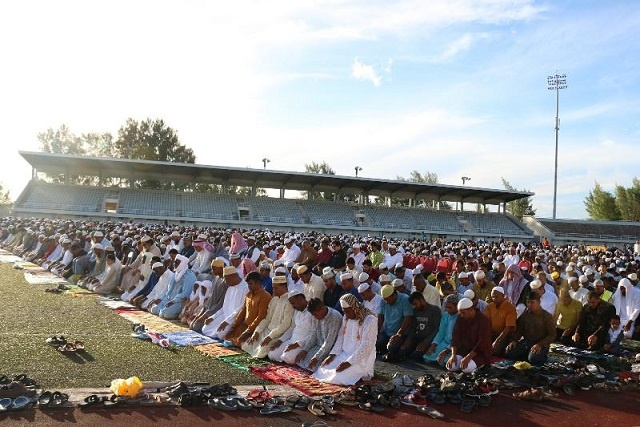Islamic community in Seychelles celebrates Eid al-Fitr, President sends message
The Islamic community in Seychelles joined others throughout the world to celebrate Eid al-Fitr on Wednesday, which marks the end of the fasting month of Ramadan.
This year, Eid-Al-Fitr was celebrated with the usual morning prayer at four locations over the country. These were the Roche Caiman Sport Complex, the University of Seychelles Campus in the southern Mahe district of Anse Royale, the Stad Amitie on Praslin and the La Digue Sports complex.
Imam Abdul Imam Heneka-Camille told SNA that the prayer on Wednesday took place at 6.30 a.m, and the Islamic community will celebrate with their families and other faithful throughout the day.
"This year, the Ramadan went smoothly, where we were able to stick to our programme, which started well before the month of Ramadan, to prepare for the month," said the imam.
He said that the month of Ramadan is not only about not eating or drinking, but also about behaving righteously.
The President of Seychelles, Wavel Ramkalawan, also sent a message to the Islamic community.
"I wish you and your families a blessed Eid-al-Fitr filled with love, happiness and countless blessings. Celebrating this joyous festival of thanksgiving, may Allah's blessings fill your lives with more happiness, peace and good health always," said Ramkalawan.
"As a people, we are blessed to enjoy a sense of spiritual togetherness, regardless of our faith and we pray our beautiful islands of Seychelles continue to live in this harmony of faiths for the further prosperity of the country," he added.
Ramkalawan said, "May the sacrifice of Ramadan and the blessings received accompany you during the year. Warmest wishes for a joyful celebration. Eid Mubarak."
Eid-al-Fitr is the first day of the Islamic month of Shawwal and though it is not a public holiday in Seychelles, the law stipulates that it is at the discretion of the employers to allow Muslim workers a day off.
The population of Muslims in Seychelles, an archipelago in the western Indian Ocean, has grown rapidly in recent years, from under a hundred people in the 1960s and 1970s to approximately 2,500 today, which represents about 3 percent of the island nation's population, according to National Bureau of Statistics.






